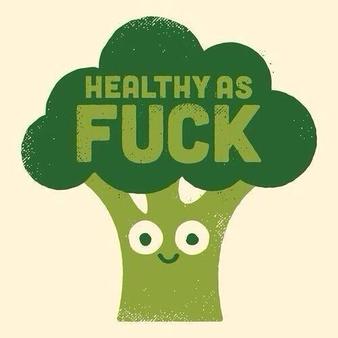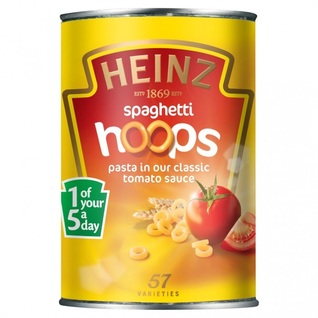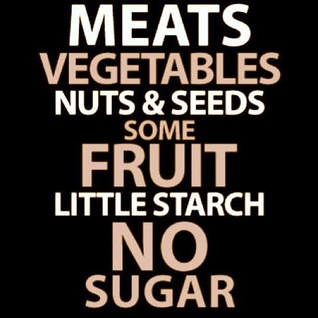One of the problems is that trials of specific diets are usually too short and too poorly controlled to really tell us anything about the long-term effects. An alternative testing method often used is the observational study. These studies look at how people eat, and document their subsequent health. However, they tend to compare those who eat the most of something compared to those who eat the least. There are a number of potential problems with observational studies, a large one being that looking at the extreme edges of a population makes it hard to provide a definitive answer for the great majority of us sitting in the middle of the pack.
Despite this, if we look at overall trends revealed by nutrition research, I think we can certainly come up with some common advice:
- Reduce intake of processed food.
- Reduce intake of sugar.
- Eat a variety of foods to get the wide range of nutrients we need.
- Lower-carb is better than low-fat.
- Diets based on whole foods are better than overly manipulating any one nutrient.
So, what can we do with this information? In this article I outline the foods that we need to focus on for optimal health, and why. Though many sections will later be a whole article in themselves, one theme should become clear:
There is no one perfect way to eat, but we must take control of our own health and focus on whole foods. This will then allow us to experiment and find what makes us feel and perform best.
Whole food diets beat everything else
Diets based on whole foods are becoming popular amongst the medical and health-related communities, as well as being increasingly supported by scientific evidence. This means eating foods that look like they did when they came from the ground, or the animal. The most widely researched example of a whole foods diet is the Mediterranean diet, which focuses on the following:
- Vegetables, peas and beans (legumes), fruits and whole grains.
- Fish and poultry.
- Mono-unsaturated olive oil or rapeseed oil.
- Limited highly processed 'fast foods' and 'ready meals'.
- Moderate amounts of dairy products, preferably low-fat ones.
- No added salt.
- Lots of water, and red wine in moderation.
A meta-analysis (study of many studies), which looked at trials comparing the Mediterranean diet to low-fat diets showed that the Mediterranean diet provided better improvements in weight, blood pressure, cholesterol and high-sensitivity CRP (a marker of inflammation that is associated with increased risk of cardiovascular disease). In addition to this, trials of the Mediterranean diet have been associated with significant improvements in metabolic syndrome, glucose control as well as reduced risk of cancer and dementia.
So, if you’re somebody that currently relies on convenience foods which are loaded with processed carbs, fat and sugar, the Mediterranean diet would be a fantastic step towards better health. However, almost all of the studies examining the effect of the Mediterranean diet have only compared it to the highly processed, nutrient-deficient Western diet.
Therefore, although idea of focusing on real, whole foods is certainly a huge step in the right direction, there may be scope to make it even better…
Over the last few months, I have mentioned in a number of posts that one key step to improving health involves eating “real food”. In my opinion, this involves focusing on the following:
- Plenty of vegetables, and some fruit.
- Protein from meat, offal, fish and eggs.
- Healthy fats including oily fish, high-quality meat, olive oil, coconut butter, avocados, and real butter.
- Some nuts and seeds.
These are the foods that have increasingly been shown to improve health and longevity in almost every population. However, what you don’t eat is probably more important than what you do eat. Things you should avoid include:
- Processed foods. This includes anything with a long list of unpronounceable ingredients, and loaded with fat and sugar.
- Wheat.
- Vegetable oils, such as sunflower, canola, peanut, grapeseed and rapeseed.
- Margarine. Margarine is evil.
In addition to these things, there are a number of foods that cause problems in a lot of people. Though not universal, these “grey area” foods should be initially avoided by people seeking to gain optimal health, especially if they are already beginning to suffer from Western diseases like cardiovascular disease and type 2 diabetes. They are:
- Other grains such as oats, rice, corn, rye, barley and all their derivatives.
- Dairy products, particularly mass-produced milk.
- Legumes. This is the bean, pea and lentil family, and also includes peanuts.
You may recognise this as being very similar to the “Paleo” diet. This is a “diet” that doesn’t focus on weight loss, but rather increasing health with real food, less stress and more sleep. This lifestyle has been popular for a while in the USA and has now started to receive a lot of press in the UK. Surprisingly, much of this recent media attention was pleasingly unbiased, and fairly positive. Irrespective of the media perception, it is worth noting that, unlike every other “diet” that has been and gone over the previous decade, the “paleo” movement is continuing to gain momentum.
An analysis of modern diets also found that consuming mainly meat, fish, vegetables, fruit, nuts and seeds is most nutrient-dense way to eat. At first glance, the diet appears fairly radical, and people usually feel strongest about the grey area foods such as grains and dairy. However, bear with me. I will explain why I believe this is the best way to eat. Read the next few hundred words and you can then decide whether the initial “inconvenience” of changing the way you eat is worth the benefits that I am certain you will experience.
You might be intolerant and not know it: You’re right, you probably don’t have celiac disease. However, fewer than 1 in 8 people with celiac disease are aware that they have it. And, at least 12% of all other people have some level of sensitivity to wheat (some people say it is as much as 1/3 of all people, but this isn’t properly published data). This does not necessarily have to involve gluten, either. There is a wide-range of similar proteins (the prolamins) in almost all grains, which can stimulate reactions similar to gluten sensitivity and celiac disease. Gluten sensitivity is associated with a number of neurological conditions, as well as things like irritable bowel syndrome.
It messes with your brain When gluten is digested, it can be broken down into a number of small proteins, which act directly on the brain, in the same way that morphine does. These proteins can also alter insulin secretion (the key component in diabetes), and change dopamine signalling in the brain. Though the evidence is less concrete than some people will tell you, this is thought to be why wheat and gluten are associated with disorders such as autism and schizophrenia
Ever wonder why you’re particularly sleepy after a pizza or a large sandwich? That’s the unique effect of wheat causing morphine-like effects on the brain. This effect is compounded by the surge in insulin that wheat causes, over and above that from foods with similar amounts of carbohydrate in.
It messes with your gut: Gliadin, one of the breakdown products of gluten, directly interacts with the lining of the gut to make the connections between cells of the gut less “tight”, and make the gut “leaky”. This is well known in people with celiac disease, but is also seen in healthy people. Breaking down the junctions between cells in the gut essentially creates a passage for anything to get through. This includes bacteria and poorly digested food, which can have a huge inflammatory impact on the body once in the blood.
It increases your risk of a number of diseases:
Adding wheat to the diet appears to increase weight and risk of heart disease. In addition to this, increased gut permeability associated with wheat intake has been seen to precede, and be associated, with:
- Type 1 Diabetes.
- Autoimmune joint conditions like rheumatoid arthritis.
- Fibromyalgia and Chronic Fatigue Syndrome.
- Inflammatory bowel disease.
I will admit that we just don’t know the exact consequences of having a “leaky gut”, and it remains a rather ethereal term. I certainly cannot assuredly say that wheat is the cause of all the above diseases. Some whole grains (particularly oats) do also appear to have some protective effect against heart disease.
However, if you are overweight and afflicted with one of the number of diseases associated with grain intake, maybe it is time to take a break from grains and see how you fare.
Got milk? You probably don’t need it. Consumption of dairy products is restricted in the paleo diet, largely because of the argument that humans didn’t consume large quantities of animal milk until around 7,500 years ago. Even now, many populations still lack the ability to metabolise lactose, the sugar that is abundant in milk.
Whether or not we’ve “evolved” to drink milk doesn’t really matter. Much like with gluten, a large proportion of people just don’t react well to it and are unaware. Lactose intolerance can cause any number of stomach-related symptoms including bloating and cramps, flatulence, diarrhoea, nausea and vomiting. Such symptoms are seen in up to 20% of Caucasian populations in the UK and USA, and as many as 70-80% of those of African, Central-American or Asian descent. In addition to this, many people are also allergic to casein, the main protein in milk. Casein proteins can also trigger symptoms in those with celiac disease, and increase the risk of inflammatory bowel diseases.
Even if you are not intolerant, dairy can be bad news:
- Milk induces large spikes in insulin due to its unique combination of sugar, protein and fat.
- Milk contains a large number of growth hormones, which may increase the risk of cancer. These are artificially raised in mass-produced dairy, to speed up growth.
- Dairy consumption has been closely associated with rheumatoid arthritis, acne and Type 1 diabetes.
In addition to this, over the years, studies have associated increased milk consumption with increased heart disease. Some blamed lactose and others felt that a certain kind of casein protein (the A1 casein protein) was the culprit. However, there are probably more studies which show no association between milk consumption and heart disease. Part of this confusion could be because high-fat dairy such as full-fat yoghurt, cheese and butter contain a large number of beneficial fats and vitamins, which may improve cholesterol and reduce the risk of heart attacks, while the low-fat versions seem to increase the risk.
The consumption of dairy is usually defended on the basis that it contains calcium, which is needed for bone health. Surprisingly, all the recent studies have shown quite the opposite: increasing calcium supplementation or milk consumption has no effect on rates of osteoporosis or hip fractures, and actually appears to increase the risk of heart attacks.
Calcium intake (such as from leafy green vegetables) is very important, but the best things for maintaining bones and joints are:
- Vitamin D (1,000 to 2,000 units per day from supplementation or safe sun exposure).
- Training with weights, as well as regular walking.
Although the data on dairy is not conclusive, it seems that dairy products should not make up a large proportion of our calorie intake. Milk is specifically designed to make little cows into big cows. So, when humans consume it, the hormonal effects of large amounts of dairy seem to increase the risk of a number of diseases.
One of the main benefits of eating a “paleo” (or similar) diet is that you naturally increase your intake of protein and fat.
Fat: Fat is absolutely crucial in the diet. Nobody will argue that trans fats (think margarine and processed food) are bad, and that unsaturated fats tend to be good. However, despite some traditional misconceptions, we also need saturated fat. Saturated fat is essential to make vitamin D, as well as all our sex hormones. The theory of saturated fat causing heart disease has also been completely disproven, and eating saturated fat was even protective in some studies. However, the fat you get from highly-processed cheap animal meat is very different from fat derived from organic, grass-fed sources. Using the paleo template but relying on cheap animal products will never provide optimal health.
Protein: Increasing protein has a number of benefits. It has been shown in a number of studies that one of the main benefits of eating a low-carbohydrate diet is the associated increase in protein. Both fat and protein leave you feeling fuller for longer, but increasing protein intake also increases metabolic rate, and helps preserve and increase muscle mass during weight loss.
Low carb? To be clear, the paleo diet is not necessarily a “low-carb” diet. However, it does move us away from the modern dietary focus of carbohydrates, which appears to increase our risk of cardiovascular disease and diabetes. There is no good evidence suggesting that we actually need a diet high in carbohydrates. However, it is widely accepted that very active individuals (such as some athletes), may need more carbohydrates in order to optimise performance. In any event, we would all benefit from getting our carbs from vegetables rather than bread, for example. This would mean that we’d also get fibre, nutrients and minerals rather than just a huge spike in blood sugar that will leave us craving for food again in an hour.
Are lentils really unhealthy?!
I believe that some important nutrients and vitamins are very hard to obtain without eating high-quality protein and fat from animal products. However, I do understand that some people would rather not eat meat or fish. The real problem for these people is that the modern vegetarian diet is often based around grain products and cheese, which is far from ideal. This is where pulses such as beans and lentils may have to come in. Though they are touted as “high-protein”, they are unfortunately quite a poor source of protein and nutrients compared to meat, for instance. This is because they contain a number of “anti-nutrients” (saponins, lectins, phytates and enzyme inhibitors) that can increase gut permeability as well as significantly reduce the minerals and protein you absorb from your diet. This creates a potential for deficiencies in things like calcium, iron, zinc and magnesium.
However, if beans and lentils are prepared properly, some of these issues can be mitigated. All pulses must be well-soaked and cooked before eating. Fermented and sprouted pulses are also the lowest in anti-nutrients, and you can get a fermented effect by adding live yogurt or kefir to your soaking mixture.
If you are a vegetarian trying to improve health, here are some tips:
- Avoid grains, sugar and processed foods, as we all should.
- Eat vegetables. Lots of them. It sounds strange, but many vegetarians don’t.
- Focus on protein from the best quality eggs and pulses (plus high-fat dairy, if you tolerate it) that you can get.
- Soak dried peas, beans and lentils for multiple (2-4) days before thoroughly cooking them.
- Include a few tablespoons of lemon juice or cider vinegar in the soaking mixture.
- Rinse tinned pulses until all the foam is gone.
- Take a probiotic. The “good bacteria” can help digest phytates.
- Supplement with vitamins B12, D, A, E and K2, and omega-3 from krill or algae.
- Don’t avoid fat. Eat plenty of eggs, avocados, olive oil and coconut butter.
There is a lot of information here, and it may be difficult to see where to start. However, even taking small steps could be hugely beneficial.
In the one small study comparing the Paleo diet to the Mediterranean diet, a greater improvement in waist size and hormone levels was seen on the paleo diet. This was attributed to the paleo diet recommending an increase in vegetables in place of grains. Put simply, swapping out processed foods, grains, dairy and legumes will allow us to focus on getting more of the good stuff in.
Though we will have to wait for the science to catch up, there are thousands of anecdotal stories nowadays demonstrating that people can drastically improve their energy levels and wellbeing simply by changing the way they eat. Do you have a lot of nagging headaches? Do you feel tired a lot, but aren’t really sure why? Do you ever have that uncomfortable, bloated feeling after eating? These things have become synonymous with modern life, but should not be considered normal, and are often due to what and how we eat.
I won’t pretend that the evidence exists to tell us exactly how diets causes these modern niggles. However, it is maybe worth asking yourself the following question:
Is the “hassle” of changing the way I eat for a few weeks worth the potential benefit of feeling more energetic, losing fat, improving my sexual health and wellbeing, and maybe even reducing the number of medications I need to take?
If you want somewhere to start, try this:
- Stop relying on grain-based and processed foods.
- Increase your vegetable and protein intake.
- Get the best quality offal, meat and seafood that you can afford.
- Supplement with omega-3 and vitamins D and K2.
- Sleep more.
- Please don’t stress about your diet too much. It should be yummy and enjoyable.
Only you can find the best possible approach.
Sadly, doctors and other healthcare professionals just don’t have the necessary time to fully invest in this aspect of your health. The above is a list of simple changes which you can try individually, or all-together. They provide the best base possible, but further changes will take some individual tinkering.
By learning and experimenting with ways to make ourselves feel and perform better, I believe we can truly find our own route to optimal health.
References
For some great resources that cover the science behind why we should eat real food, check out Mark Sisson, Robb Wolf and Chris Kresser, or look at the links section of the website.
| eat_real_food_references.docx |





 RSS Feed
RSS Feed